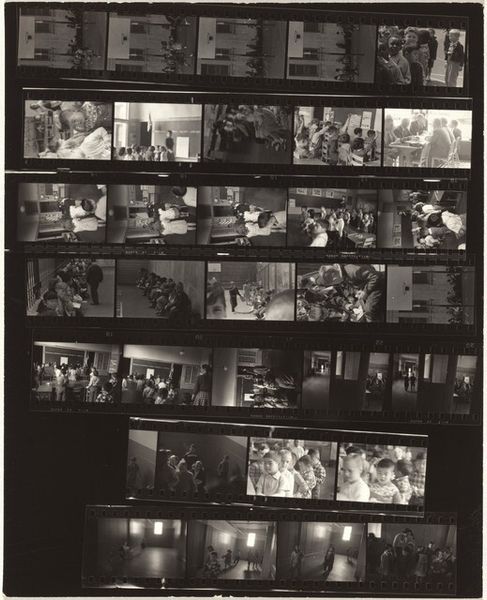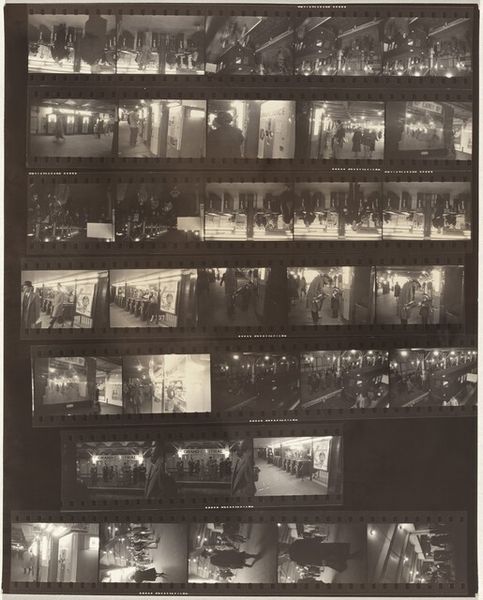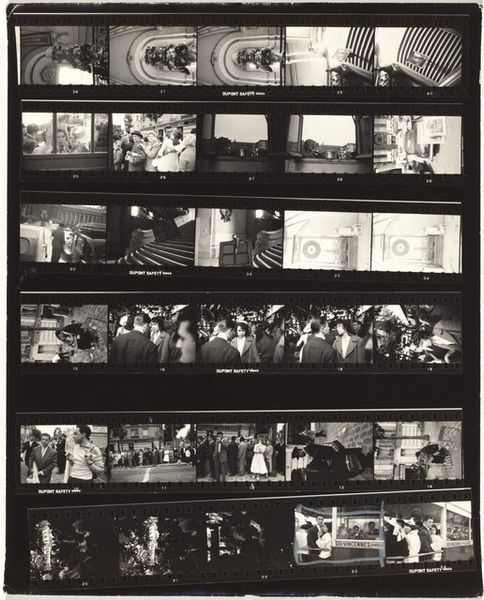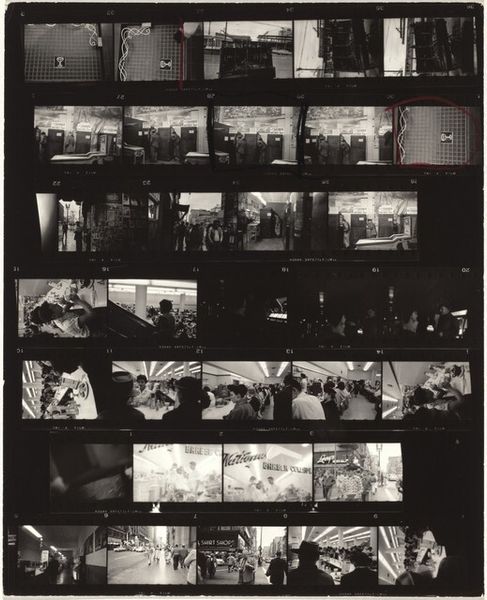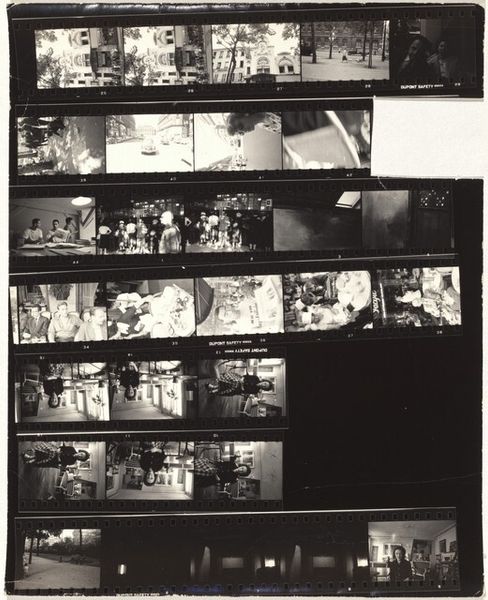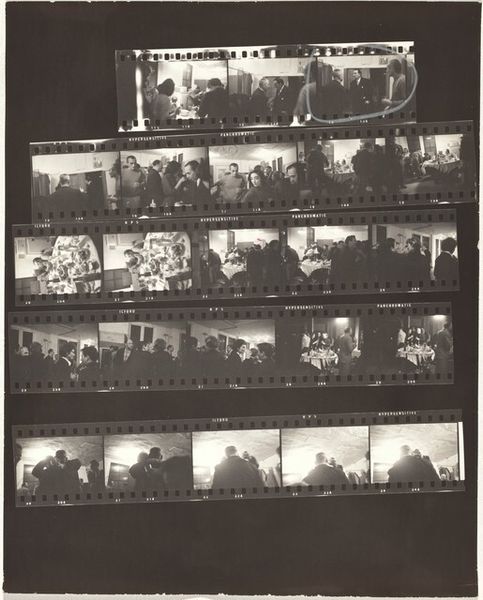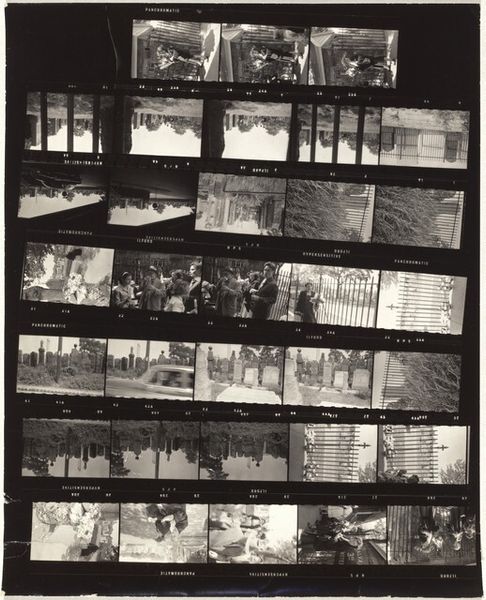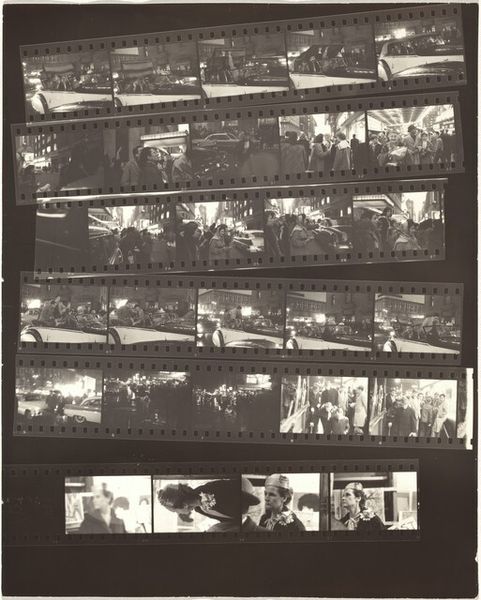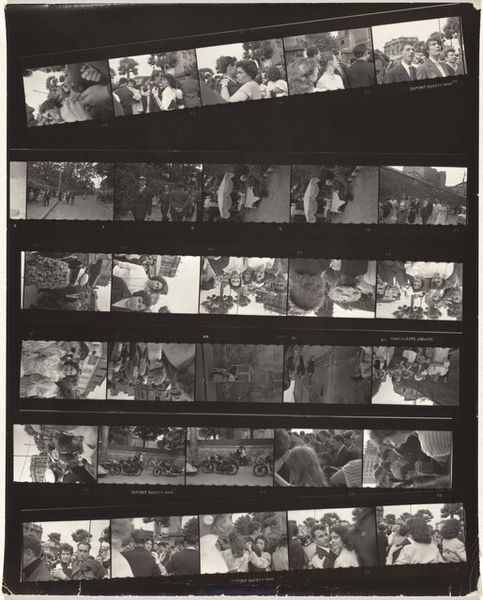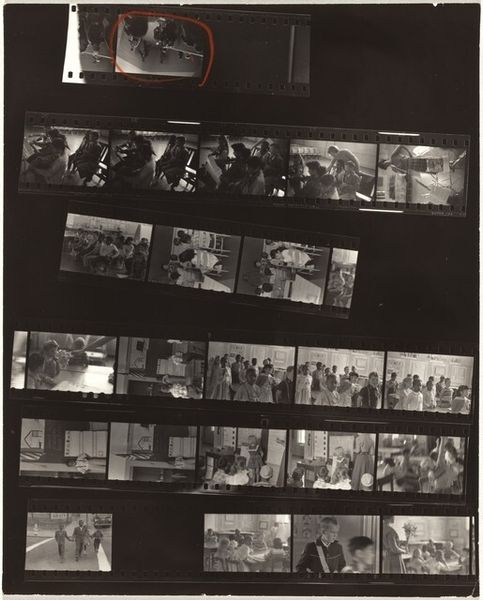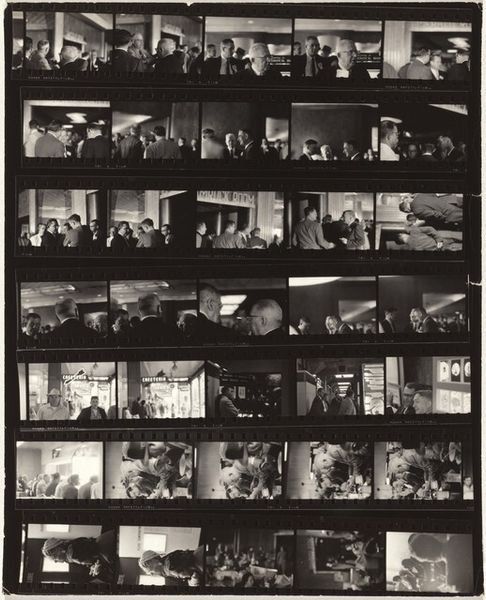
#
excavation photography
#
film photography
#
wedding photograph
#
wedding photography
#
archive photography
#
couple photography
#
monochrome photography
#
holiday photography
#
film
#
celebration photography
Dimensions: overall: 25.8 x 20.5 cm (10 3/16 x 8 1/16 in.)
Copyright: National Gallery of Art: CC0 1.0
Curator: Well, this is a rather unique work: "Guggenheim 424--Los Angeles," taken between 1955 and 1956 by Robert Frank. It's essentially a full film roll, presented as the final piece. Editor: My first impression is a feeling of fragmented reality. The stark contrasts, the sequential arrangement… it all suggests a narrative, but one that’s deliberately broken. There’s something detached about it. Curator: That sense of detachment, I think, reflects Frank’s outsider perspective as a Swiss immigrant documenting America in the mid-20th century. It’s from his project "The Americans", a project that redefined documentary photography. The choice to show the whole roll—imperfections and all—was revolutionary. It rejected the highly polished, propagandistic images common at the time. Editor: It definitely disrupts expectations of what a “good” photograph should be. The grid emphasizes the mundane, like those anonymous urban landscapes and fleeting interactions with strangers. The consistent structure gives it a kind of haunting beauty though. I mean, think about that stark monochrome palette; the dramatic lights and shadows highlight both chaos and uniformity. It feels relentless. Curator: Precisely. Frank wasn’t just capturing scenes. He was capturing a feeling – a disillusionment with the American Dream. The scenes that seem mundane in isolation gain resonance when you see the full breadth of the sequence, like that sense of social isolation amongst consumerist spaces. His choices questioned America's vision of itself. Editor: I notice a tension between the static, repetitive frames of daily life and moments of spontaneity, as well as this interesting interplay of light and darkness. This kind of tension enhances the narrative impact, adding a conceptual layer that surpasses a simple visual story. Curator: The work challenged conventions and reflected the complex socio-political landscape of the era, contributing significantly to a shift in how photography could address and question cultural narratives. It opened avenues for future generations of photographers to engage critically with societal issues. Editor: It feels so intentional now knowing that! Looking again, it does present a much wider conceptual perspective on America than you’d expect from this format. Curator: In many ways, I think its continued relevance speaks volumes about its legacy. Editor: I agree, it still speaks to the way we filter experiences now. Thanks!
Comments
No comments
Be the first to comment and join the conversation on the ultimate creative platform.
